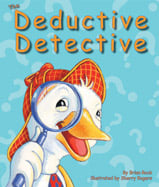Alignment to CORE and NGSS Standards

| Grade | Number | Standard |
|---|---|---|
| 1 | 1.OA.A.1 | Use addition and subtraction within 20 to solve word problems involving situations of adding to, taking from, putting together, taking apart, and comparing, with unknowns in all positions, e.g., by using objects, drawings, and equations with a symbol for the unknown number to represent the problem. |
| 1 | 1.OA.B.4 | Understand subtraction as an unknown-addend problem. For example, subtract 10 _ 8 by finding the number that makes 10 when added to 8. |
| 1 | 1.OA.C.5 | Relate counting to addition and subtraction (e.g., by counting on 2 to add 2). |
| 1 | 1.OA.C.6 | Add and subtract within 20, demonstrating fluency for addition and subtraction within 10. Use strategies such as counting on; making ten (e.g., 8 + 6 = 8 + 2 + 4 = 10 + 4 = 14); decomposing a number leading to a ten (e.g., 13 _ 4 = 13 _ 3 _ 1 = 10 _ 1 = 9); using the relationship between addition and subtraction (e.g., knowing that 8 + 4 = 12, one knows 12 _ 8 = 4); and creating equivalent but easier or known sums (e.g., adding 6 + 7 by creating the known equivalent 6 + 6 + 1 = 12 + 1 = 13). |
| 1 | RF.1.4a-Guided Reading | Read grade-level text with purpose and understanding. Guided Reading |
| 1 | RI.1.10-Guided Reading | With prompting and support, read informational texts appropriately complex for grade 1. (Non-fiction For Creative Minds) Guided Reading |
| 1 | RI.1.9 | Identify basic similarities in and differences between two texts on the same topic. (story versus For Creative Minds non-fiction component) |
| 1 | RL.1.10-Guided Reading | With prompting and support, read prose and poetry of appropriate complexity for grade 1. Guided Reading |
| 1 | RL.1.5 | Explain major differences between books that tell stories and books that give information, (paired fiction & For Creative Minds non-fiction) |
| 2 | RF.2.4a-Guided Reading | Read grade-level text with purpose and understanding. Guided Reading |
| 2 | RI.2.10-Guided Reading | By the end of year, read and comprehend informational texts, including history/social studies, science, and technical texts, in the grades 2_3 text Guided Readingcomplexity band proficiently, with scaffolding as needed at the high end of the range. Guided Reading |
| 2 | RL.2.10-Guided Reading | By the end of the year, read and comprehend literature, including stories and poetry, in the grades 2_3 text complexity band proficiently, with scaffolding as needed at the high end of the range. Guided Reading |
| 3 | RF.3.4a-AR/ATOS | Read grade-level text with purpose and understanding. AR |
| 3 | RF.3.4a-Lexile Level | Read grade-level text with purpose and understanding. Lexile Level 420L - 820L |
| 3 | RI.3.10-AR/ATOS | By the end of the year, read and comprehend informational texts, including history/social studies, science, and technical texts, at the high end of the grades 2_3 text complexity band independently and proficiently. AR |
| 3 | RI.3.10-Lexile Level | By the end of the year, read and comprehend informational texts, including history/social studies, science, and technical texts, at the high end of the grades 2_3 text complexity band independently and proficiently. Lexile Level 420L - 820L |
| 3 | RL.3.10-Lexile Level | By the end of the year, read and comprehend literature, including stories, dramas, and poetry, at the high end of the grades 2_3 text complexity band independently and proficiently. Lexile Level 420L - 820L |
| K | K.CC.B.4 | Understand the relationship between numbers and quantities; connect counting to cardinality. |
| K | K.CC.B.4b | Understand that the last number name said tells the number of objects counted. The number of objects is the same regardless of their arrangement or the order in which they were counted. |
| K | K.CC.B.4c | Understand that each successive number name refers to a quantity that is one larger. |
| K | K.CC.C.6 | Identify whether the number of objects in one group is greater than, less than, or equal to the number of objects in another group, e.g., by using matching and counting strategies.1 |
| K | K.CC.C.7 | Compare two numbers between 1 and 10 presented as written numerals. |
| K | K.OA.A.1 | Represent addition and subtraction with objects, fingers, mental images, drawings1, sounds (e.g., claps), acting out situations, verbal explanations, expressions, or equations. |
| K | K.OA.A.2 | Solve addition and subtraction word problems, and add and subtract within 10, e.g., by using objects or drawings to represent the problem. |
| K | K.OA.A.3 | Decompose numbers less than or equal to 10 into pairs in more than one way, e.g., by using objects or drawings, and record each decomposition by a drawing or equation (e.g., 5 = 2 + 3 and 5 = 4 + 1). |
| K | K.OA.A.4 | For any number from 1 to 9, find the number that makes 10 when added to the given number, e.g., by using objects or drawings, and record the answer with a drawing or equation. |
| K | RI.K.9 | With prompting and support, identify basic similarities in and differences between two texts on the same topic. (comparing story to For Creative Minds non-fiction component) |
| K-5 | Dewey | [E] |